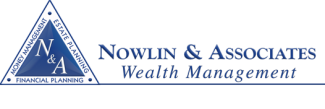
The Retirement Savings Triangle: Pointing the Way to a Happy Retirement
by Stacy Brasher on Oct 7, 2020
Stacy Brasher is Practice Manager for the office of Justin Craft, President, Nowlin & Associates
What kind of shape is your retirement in? The New Economy is rife with challenges that
threaten the standard of living we all want for our golden years. The Congressional Budget
Office projects that America’s national debt will outgrow the size of the entire economy by next
year—figures we haven't seen since World War II. Emergency spending to address the COVID-
19 pandemic has only made the problem worse. The government must eventually increase
taxes to fund that spending and debt load, and the Social Security benefits to which we're all
entitled may well be slashed or delayed. All of that on top of the virtual extinction of the pension
means that the math behind a comfortable retirement is only going to get harder and harder.
Regardless of what shape your retirement finances are in, they’re all a part of one shape you
have to understand if you want the best chance of seeing the retirement you always wanted: the
retirement savings triangle.
It may sound complex, but don't worry. The retirement savings triangle is an easy tool to
understand how taxes will impact your sources of retirement income. There are three points to
the triangle, and every source of income you may rely on in retirement falls under one of those
points. The points are, from least to most advantageous, taxable, tax-deferred, and tax-free. It
really is that simple. If you had your choice, which point would you choose to keep your
retirement dollars in? I thought so.
Let's briefly run through each of the points to give you a better idea of what exactly they
mean and what sort of income sources fall under each category. We'll begin with the taxable
point. As its name suggests, assets within the taxable category are ripe for the IRS' picking.
Taxes must be paid on income from these sources in the year it was received. Full stop.
Conventional things like CDs, Money Market Accounts, Bank Accounts, Mutual Funds, Stock
Dividends, Corporate & Treasury Bonds, and Real Estate are all taxable.
Next, let's examine the tax-deferred point. This category is somewhat more nuanced
than the straightforward taxable point. In the broadest terms, tax-deferred accounts shelter
investments from taxes as long as they remain in the account. This is the principle on which
many of the retirement vehicles you're probably most familiar with operate. Products like 401(k)
and 403(b) plans, traditional IRAs, pensions, and annuities are all granted special status by the
government's revenue code to delay the taxes paid on the funds contributed to these accounts.
This helps the bearer focus more of their immediate resources on accumulating what they'll
need in retirement in order to maximize the time available for growth and maturation.
Finally, there's the most advantageous point of all, tax-free. It may sound too good to be
true on the face of it, but there are products and strategies that will allow you to keep the
maximum amount of the hard-earned money you accumulate for your retirement years. When
you make a withdrawal from tax-free or tax-exempt sources, you don’t pay income taxes. These
sources include municipal bonds, Roth IRAs, and permanent life insurance products. It's the last
of these tax-free sources, properly structured whole life insurance, which has the greatest
potential to free your income from tax obligations and keep it for its intended purpose of
elevating your quality of life in retirement.
What makes whole life products so effective for those who choose to park their
retirement dollars within them? And what does insurance have to do with providing for your
living expenses down the line? Let's explore the fundamentals in brief. First of all, you're more
likely familiar with term life insurance policies, in which coverage is limited to a set time frame
and premiums tend to be less expensive. Like term life, the obvious pro of investing in a whole
life policy is the promised death benefit, guaranteed to be paid so long as the terms of the policy
are honored. But beyond the peace of mind afforded by that death benefit, whole life coverage
can do so much more. It offers the bearer tax-deferred growth of the cash value of their policy. It
offers liquidity; your funds are readily accessible, unlike with many other retirement vehicles with
stiff penalties for premature withdrawals. And that liquid accessibility is truly tax-free in the form
of direct withdrawals of your equity or interest-free loans taken against the value of your policy.
And for those with higher incomes, there are no barriers to the use of whole life products, and
there are no legal limits to how much you can invest up to your policy’s value.
With all of those benefits and more on the table, you may be wondering why you don’t
know more people taking advantage of whole life coverage’s benefits. But your grandparents' generation wouldn't share your confusion. In fact, through the late 1970s, whole life policies
were the most popular way Americans chose to put money away for retirement. And now those
who are tired of volatile markets making it harder and harder to have certainty that their
retirement dollars will grow reliably are rediscovering the advantages of whole life coverage.
If you take nothing else away from our breakdown of the retirement savings triangle,
remember to think of your retirement in net terms, not gross. After all, you can't take that trip
you've been dreaming of for decades or start that woodworking hobby with money that's already
been earmarked for Uncle Sam's pocket. The reality is that you will face tax obligations in one
form or another. But you can do plenty to put yourself in the best position possible. Properly structured whole life insurance is a powerful tool that can be used to offset the funds you’ll
inevitably give up to the tax collector. It can also prepare you and your family to weather any
looming cuts or delays to your Social Security benefits. When planning for your retirement, aim
for the tax-free point of the retirement savings triangle. The first step is beginning a relationship
with an experienced advisor who has the strategies to help you succeed.
